in which we find ourselves learning in spite of ourselves of waffling warps and willful wefts…
My latest efforts on my loom ended in triumph but I admit it took me a while to get there. The most recent (no. 253) issue of Handwoven included a pattern for some lovely dish towels that seemed just the ticket for my sister’s Xmas present. Yes, it is well past Xmas, but I lacked inspiration until the Cajun-inspired fabric spoke to me. My sister had mentioned natural linen, black, and maybe a hint of cherry red as colors (if she hadn’t allowed for the cherry red, she might have waited longer for the towels). Luckily, I had some lovely cotolin – perfect for the pattern and perfect for the towels. Easy, I thought. How long have I been doing this and when did I become dillusional? It is those easy ones that teach me.
First for the warp. It wound beautifully – with perfect even numbers to allow me to warp back to front. I carefully hung my lease sticks off the back of the castle, placed my raddle on the back beam, and attached my warp. As I slowly wound it onto the back beam Ping! Sproing! Twang! I lost 4 threads before I realized the cotolin had clung to itself, wrapped itself around the raddle, and fought a valiant but losing battle with the force applied to the back beam. Lesson 1: Pay attention all the time. (Once I saw the problem, I was able to monitor the warp and no more threads were lost.)
I was quite happy with the pattern flow until about halfway through my first towel. While the pattern recommended the plaid pattern for the 4th towel, I wanted to weave that 1st to see how I liked it. As I wove, I noticed that the 4 threads warped as one were not deflecting at the same rate as the rest of the warp threads resulting in tension issues. I had to weight these threads separately throughout the rest of the weaving – if it had been the 4th towel, it probably would not have been an issue. Lesson 2: Patterns are usually written as they are for a reason – ad libs introduce risk so be prepared to pay.
Last, as I was finishing the towels, I had some issues with my sewing machine and the hems. The hem material was a little thin and my sewing machine fought to maintain proper stitch tension. I took a page from my sewing memory and used a little fusible interfacing to solve that problem. Lesson 3: I don’t have to approach each craft as separate and shouldn’t.
I don’t want to give the wrong impression. I like these towels a lot and I plan to make them again sometime. I love how cotolin feels after it has been washed. These towels are just right for their intended purpose – to be used and used and used. I love the texture created by the 4 threads warped as one (and the 4 shots as one in the weft). A member of my support and mentoring weaving group recommended sleying the 4 threads as one, but putting each in its own heddle to solve the tension issue. And I learned a neat trick at my guild meeting today for carrying the thread up the side that I will try with my next plaid effort. Lessons 4 & 5? The learning never ends.
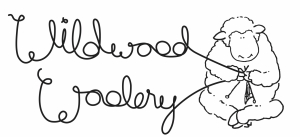


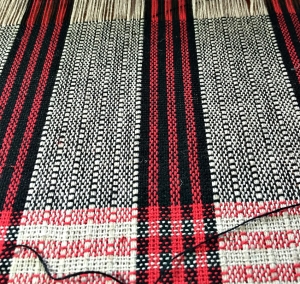
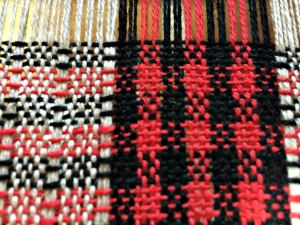
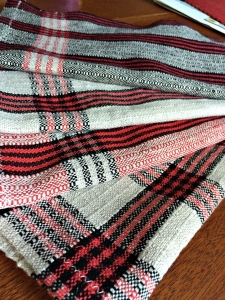


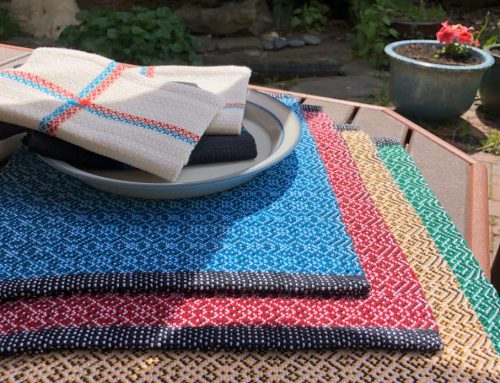



Post looks great, Lisa! And the towels look terrific — I think they’ll suit your sister’s taste to a tee!